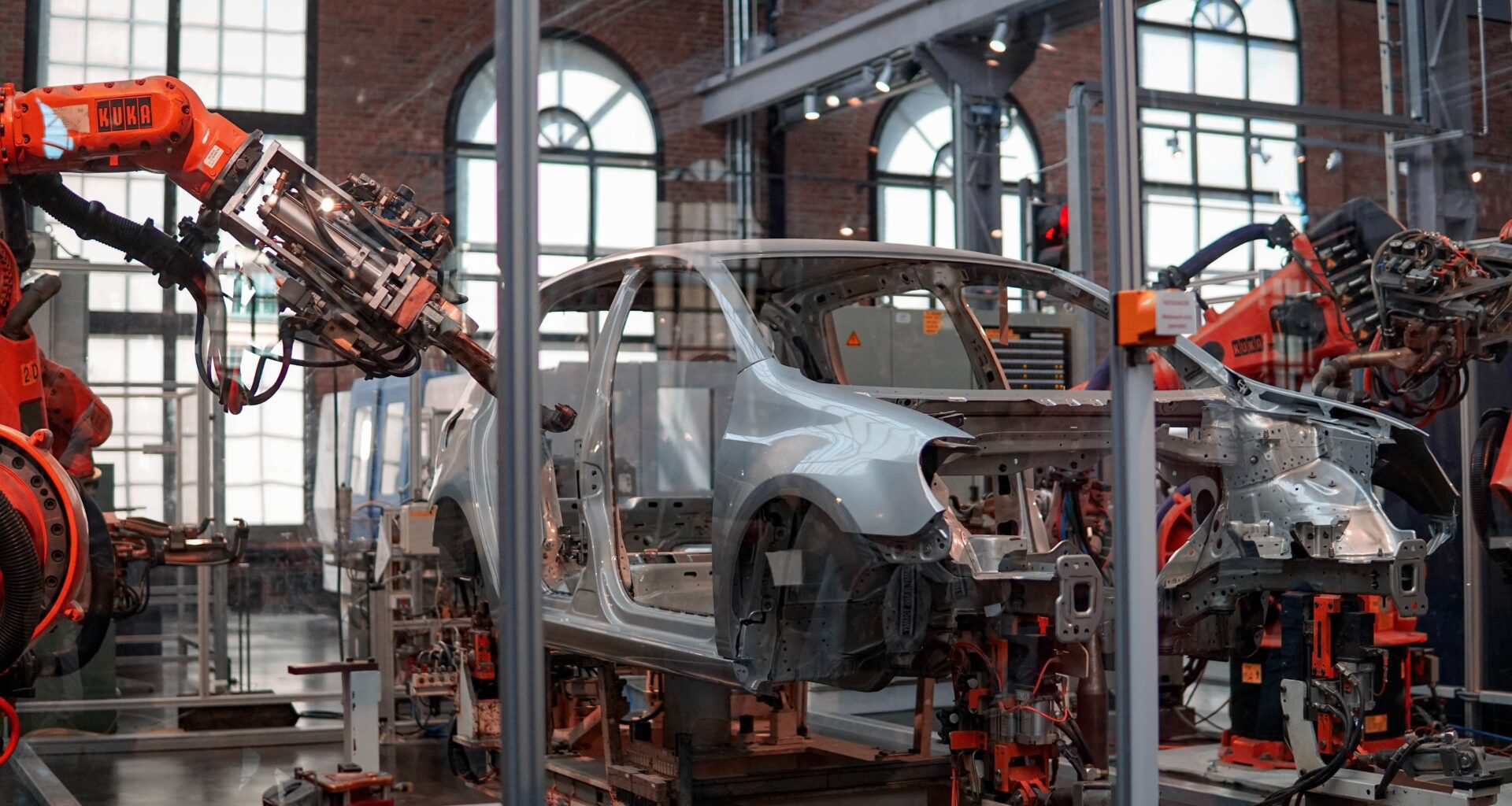Enterprise of the future
According to a Deloitte report [1], over the next 5 years, a total of just over 2,700,000 people will retire from the manufacturing industry. This will be a generation of people that came into the world when the great post-World War II baby boom took place. There are now as many as four generations, Baby Boomers, in the job market. This is a very large and experienced generation of people who have been in the job market the longest.
When these people retire, they (potentially) take the knowledge and practice gained over the years. For industry, this presents not only a threat but also a challenge. Businesses need to embrace digital transformation and automation as soon as possible. Impeded access to specialists will affect many factors of a company’s work, even such mundane things as access to people who can service or repair a machine or deploy new employees.
When you add further data from the European Agency for Safety and Health at Work to the lack of specialists on the market, it becomes clear that continued access to specialist staff is a huge problem. Globally, work-related accidents and illnesses cost €2,680 billion, or 3.9% of global GDP. In Europe, the sum is 476 billion Euros or 3.3% of European GDP. In Poland, according to the Central Statistical Office[2], 52,866 people were injured in work-related accidents in 2019 from January to September.
Industry 4.0
According to IDC, companies will spend nearly $271 billion on digital transformation in 2020, but only 16% of these will provide new revenue streams[3]. Digital transformation spending will account for 51% of all IT spending in Europe by 2023[4].
80% of CEOs feel under tremendous pressure to implement digital transformation (DX) in their companies as quickly as possible.IDC has prepared on this occasion a simple agenda for all CEOs who do not know where to start. It consists of four points worth paying attention to.
The first of these is customers. You should focus on building trust and empathy with customers, and shift your business operations from throughput and efficiency to market conditions, and keeping a close eye on change. Next on the map are: becoming an intelligent organization, delivering innovative services and experiences at scale, and creating a dynamic work model. Next, we should create the right critical infrastructure for change, which consists of, among other things, reliable digital services. After that, we should define the new value in the digital economy, and define our role and the role of our partners, and create a fully functioning industry ecosystem.
It is also worth mentioning that by 2022. 25% of the top 500 European companies will evolve and focus their efforts on digital technologies and the pursuit of business excellence and sustainable development.
Digital transformation
According to PwC,[5]the entire industry’s transformation to a digital 4.0 model will significantly change from an organizational and process perspective. 29% of those surveyed by PWC said that their organizations intend to use technology to modify their existing product range. 27% said their companies want to expand their offerings with new, innovative products. The same number said they would invest in data analytics services for other companies.
According to Capgemini, the number of smart industrial plants increased by 58% worldwide in 2017-2018. Car manufacturers alone expect that by the end of 2022. 24% of their factories will be smart factories, and 49% of manufacturers have already invested more than $250 million in smart factories[6].
According to a report by the Polish Economic Institute[7], already in 2018 there were 13632 industrial robots working in Poland with 39% of them precisely in the automotive industry
According to this report, 29% of jobs in Singapore will be done by robots, and 14% are already being done. Globally, 14.8% more industrial robots worked in 2018 compared to the previous year. One of the key findings of this report is that Polish companies use industrial robots to a much lesser extent than the world’s most industrialized countries or even our V4 neighbors. However, the accumulation of internal factors (demographics, rising labor costs), as well as external (technological progress, the need to catch up with economic leaders), makes it clear that in the coming years, robotization should be an essential part of the development strategy of all enterprises.
PWC gives 6 steps to a successful transformation:
- creating a strategy – a holistic look at the current situation,
- launching pilot projects – with the assumption that not all projects will be successful,
- the precise definition of needs and resources,
- data analysis and collection is an effective key to Industry 4.0. Therefore, all possible data should be collected,
- building the right culture and growing it above the company structures,
- creating an ecosystem along with comprehensive development of product and service solutions for customers;
The right strategy for the enterprise of the future
Ever since I’ve been teaching startups, I’ve been talking about why it’s not good to copy and model others and how it kills our creativity. Besides, we also don’t know why someone did what they did and what situation forced them to do it. The same applies to large entrepreneurs. However, as data shows, by 2022, as much as one-third of European organizations will not be able to accelerate business agility and innovation precisely because of the culture of copying ideas from others.
Data analysis
According to IDC, the business models of the future will always be data-driven

Enterprise data growth in Europe has grown 27% year-over-year. IDC suggests that to achieve “data maturity,” the focus should be on consolidating data from various sources, then attempting to visualize it, analyze it, and finally monetize it.
Correct, long-lasting, and actionable data analysis is not possible without the support of artificial intelligence. This is why European spending on artificial intelligence will reach $10 billion by the end of 2020 alone. By 2025, 60% of European companies will upgrade their core IT infrastructure to cloud solutions which are expected to result in a 25% increase in productivity.
Customer Experience
CX (Customer Experience) is the familiar practice of defining and refining the path that leads a customer through a series of encounters with a brand. Some of these involve buying products or services through a website, for example. Others involve a conversation with a customer service chatbot, advertising, brand appeal, sentiment on social media-driven, definition of influencers for repeat purchases, email campaigns, returns, complaints, and even debt collection. CX practitioners try to combine data from different departments and systems within their company. CX metrics for measuring brand performance typically include CSAT (Customer Satisfaction), NPS (Net Promoter Score – how willing they are to promote the brand), ATV (Average Transaction Value), and CLTV (Customer Lifetime Value), as well as trends in how these metrics change over time.
When we look at the KPMG report[8], we can find six pillars of Customer Experience. These pillars provide a much better understanding of what aspects are particularly important to the customer throughout the cycle of the consumer’s relationship with the brand and its products. These pillars include:
- Credibility – how the brand promise is delivered,
- expectations – whether the customer knows what to expect,
- time and effort – how not to make products and services difficult to use,
- empathy – how to empathize with the customer’s specific situation,
- personalization – how to respond to individual customer needs,
- and problem-solving – how to turn problems into positive experiences;
To emphasize how important the customer experience is and what it aspires to be, one need only look at the press release issued in July 2020 by Mercedes-Benz. Britta Seeger, member of the boards of Daimler AG and Mercedes-Benz AG responsible for marketing and sales, said:
“The COVID-19 pandemic has accelerated the digitization process. We assume that by 2025 we will generate a quarter of global car sales, together with our dealer partners, through online channels. By then, our customers will book 80% of all service visits online.”
Tax instruments to support automation and robotization
In simple terms, the following categories can be distinguished:
- automation support solutions based on favorable depreciation rules,
- solutions supporting automation based on tax credits or exemptions,
- solutions to support the automated taxpayer,
- direct financial support for investments in automation technologies;
| Country | Favorable depreciation rules for robots | Tax credits for automation | Exemptions for automated activities | Direct financial support |
|---|---|---|---|---|
| France | X | X | ||
| Italy | X | |||
| Germany | X | |||
| USA | X | |||
| Singapore | X | X | X | X |
| Malaysia | X | |||
| Thailand | X | |||
| South Korea | X |
In Poland and the Polish tax system, there are no regulations directly supporting automation and robotization in production. According to the authors of the PIE report, however, it is possible to identify mechanisms that can be used (in certain limited cases) by companies planning to automate production. These include:
- R&D relief,
- IP Box relief,
- favorable one-time loss accounting rules;
Sources:
[1] American Manufacturing Competitiveness and the Looming Skills Gap [2] https://stat.gov.pl/obszary-tematyczne/rynek-pracy/warunki-pracy-wypadki-przy-pracy/wypadki-przy-pracy-w-okresie-styczen-wrzesien-2019-roku,3,37.html [3 ] IDC FutureScape 2020 [4] IDC Worldwide Digital Transformation Spending Guide, 2018H2 [5 ] https://www.pwc.pl/pl/publikacje/2017/przemysl-4-0.html [6 ] https://www.capgemini.com/pl-pl/resources/inteligentne-fabryki-samochodow-producenci-samochodow-jako-kierujacy-cyfrowa-rewolucja-przemyslowa/ [7] http://pie.net.pl/wp-content/uploads/2019/11/PIE-Raport_Robotyzacja.pdf [8 ] [Digital] customer our master




